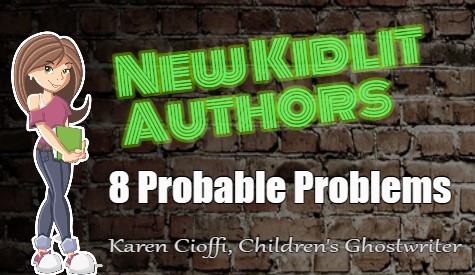I had an interesting query last week. The potential client is a creative writing graduate. Granted she said she didn’t ever write for children, but the mistakes that were made throughout the draft were amateurish in any genre. 8 PROBLEMS I FOUND 1. The story was too long. The author was inspired and wrote the story for her baby (under a year). But it was close to 2000 words. As she was going for a 32-page picture book for young children, that word would need to be cut to well under 800 words. This means there would be a lot of cutting. For example: Word choices: He stopped moving vs. He stopped. He nodded his head vs He nodded. He shrugged his shoulders vs He shrugged. Sentences that don’t move the story forward should be cut. Descriptions that the illustrations can show should be cut. Repetitiveness should be eliminated. 2. There was no discernable protagonist. When writing for children, there needs to be simplicity and clarity. There needs to be a protagonist’s point of view. The young reader needs to know who is telling the story. This allows the reader to connect with the character, be engaged, and helps keep the reader reading - turning those pages. 3. The story started, “One day.” And the entire first page was telling. If the reader isn’t hooked immediately, chances are he’ll close the book. It’s important to grab the reader with action and dialogue, especially in the beginning. 4. There was an over-abundance of adverbs, adjectives, etc. Victor Appleton, the author of the original Tom Swift books, overused adverbs and unnecessary taglines to the point of it becoming a joke among authors. This author followed the Tom Swift theme. Examples: - Shouted inquisitively - Asked excitedly - Shaking his head a little more excitedly at the thought of - We desperately need your help 5. Many of the sentences lacked clarity. As I can’t use the actual sentences, I got a couple of ideas for examples from Dominican University to show how clarity is important. Example 1: After opening the oven, it shut down. This sentence could imply that the oven opened itself. Or, it simply doesn’t make sense. Correction: After I opened the oven, it stopped working. Example 2: Joseph only practices soccer on Saturdays. This could be interpreted that Joseph doesn’t nothing else on Saturdays. Correction: Joseph practices soccer on Saturdays. Clarity rules, especially in children’s writing. 6. There were a lot of “ing” verbs. Using “ing” verbs makes for passive sentences. Action verbs should be used in their place. For example: She was skipping vs. She skipped. He was jumping vs. He jumped. 7. Run-on sentences. While I can’t use the sentences themselves, a few of the sentence word counts were 46, 40, 37, and 30. While it’s important to vary sentence lengths, young readers need things simple. This includes sentence structure. Keeping track of a 46-word sentence won’t cut it. If you need to concentrate or even pause a moment to get the meaning of the sentence, it’s too long. And your young reader will have an even harder time. Break the sentence into two or more sentences. If you want a general sentence word count range, think 15-20. 8 Lackluster ending. The ending in the draft, had nothing to do with the journey. Story endings wrap things ups for the reader. It shows the culmination of the main character’s journey. If the story is about Juan working hard, doubting himself, and working harder to be a good baseball player, maybe the ending has Juan hitting a homerun with bases loaded. He runs to home plate with the crowd cheering. Sources: -https://wordcounter.net/blog/2017/04/04/102966_word-count-list-how-many-words.html -https://englangbooks.co.uk/books-chapters-paragraphs-words-guidelines-on-length/ -https://mydu.dom.edu/ICS/Resources/Student_Services/Learning_Resources/Writing_Resources/Mechanics.jnz
I’m a working children’s ghostwriter, rewriter, and coach. I can help turn your story into a book you’ll be proud to be author of, one that’s publishable and marketable. You can contact me at: kcioffiventrice@gmail.com. Or, you can give me a call at 834---347---6700. (Please leave a message - I'll get back to you as soon as I can.) Or, if you’d rather do-it-yourself, check out my book, How to Write a Children’s Fiction Book.


